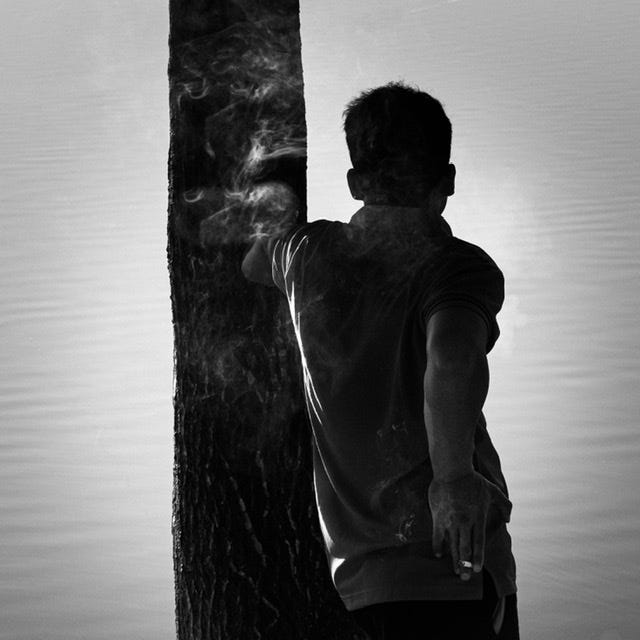A technique used by artists and photographers alike is aerial perspective. Aerial perspective is not the same thing as a bird’s eye camera angle. It is not a camera angle at all.
Aerial perspective has a definition in psychology. It is “a monocular cue to depth perception consisting of the relative clarity of objects under varying atmospheric conditions. Nearer objects are usually clearer in detail, whereas more distant objects are less distinct and appear bluer.”1 Another name for aerial perspective is atmospheric perspective.
Countless examples of aerial perspective exist in painting and photography. Let’s examine a few.
Aerial Perspective in Painting
In this painting, Claude Monet painted the background of this scene as if it were in the misty distance. Note the strong figure-ground relationships he achieved with this artistic choice. If the background was sharp and clear, the figures would be lost against it, and the painting would lack the visual depth aided by the aerial perspective.
A year later, Monet would paint and name a work that would usher in impressionism. The aerial perspective is on full display once again. The boat in the center and the rising sun appear to be the subject. The foreground boat is relatively sharp, as are the figures on it. The sun in the background struggles to break through the haze, and the sun’s luminosity is about the same as the sky.
Aerial Perspective in Photography
Some of the best early photographic examples using the aerial perspective come from pictorialists who wanted their photos to be more like impressionists' paintings.
This photograph of Columbus Circle was taken by W.A. Fraser and published in Camera Notes in January 1899.2 Fraser used mist and rain as atmospheric elements. Notice the relative clarity in the foreground that decreases to and past the monument.
Six years earlier, in 1893, Alfred Steiglitz made Winter on 5th Avenue. In this photograph, aerial perspective was achieved with snow. Stieglitz printed at least two versions of this photograph.
Both versions illustrate the aerial perspective. I prefer the cropped version because it very clearly identifies the subject, whereas in the uncropped version strong contrast is shared by (to my count) five other areas. It also appears that an effort was made in the cropped version to decrease the brightness of the background so that the subject would have a stronger figure-ground relationship. Compare the subject here with the boat in Impression, Sunrise and you will see how the aerial perspective can be effectively used.
Gregory Crewdson uses aerial perspective in much of his work to add both visual depth and mystery. His photographs are elaborately staged and he has a production crew providing the atmospheric elements. This is one of my favorites from his book, An Eclipse of Moths.
I will leave you with two photographs in which I used atmospheric elements. I like to include repeating elements in my photographs. The fence is the subject. The fog enhanced the figure ground relationship of the fence and added depth to the scene. To put it another way, without the fog the posts would have had the same dark tones as the distant tree line.
I happened to be walking along a path next to a lake and found this man smoking a cigarette and leaning against a tree. I asked him if I could take his photograph.
I hope this article has given you some inspiration to incorporate aerial perspective and atmospheric elements into your photography.
I appreciate you taking your valuable time to read Behind the Film Camera. I also genuinely appreciate all the feedback that has been left and sent to me directly.
Please do me a favor and share this with your photography friends!
https://dictionary.apa.org/aerial-perspective
Camera Notes was the publication of the Camera Club of New York where Alfred Stieglitz was Vice President at the time.












